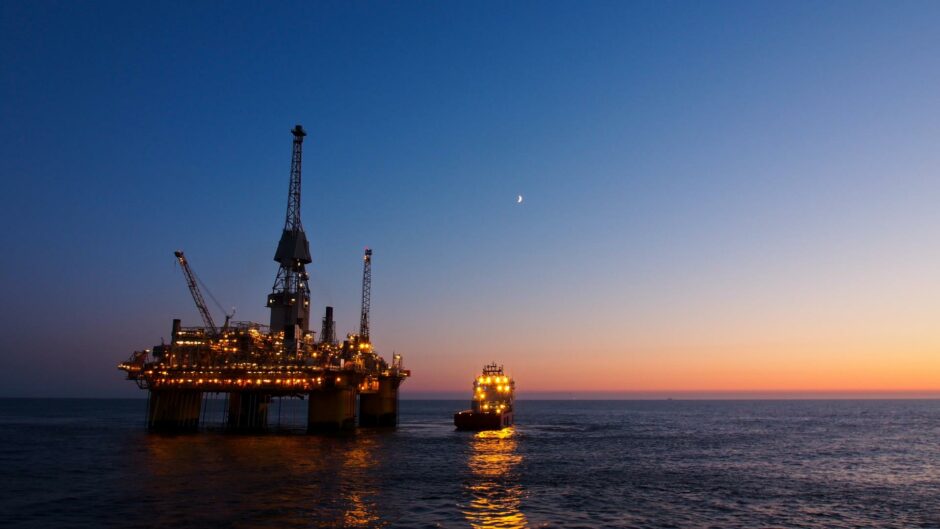
Life begins at 50. To be precise – a second life.
For the last half-century the North Sea has provided Britain with essential and secure supplies of oil and gas plus billions of pounds of revenue and hundreds of thousands of highly skilled jobs, not just in Scotland but also through supply chains which run across the UK.
Without the North Sea the UK, and Scotland in particular, would be poorer and more vulnerable to the highly volatile international markets for oil and gas.
But the story is not over. The North Sea can now look forward to the prospect of a second life as the source of a range of new energy supplies, significantly lower in their carbon intensity. North Sea 2 has already begun with the development of electricity power lines; interconnectors run between France, Belgium and the UK, and since 2022 power has flowed through the longest interconnector in the world between Norway and Britain. This 720km line supplies some 1,400 MW of power.
More interconnectors are in prospect, as is the development of carbon capture and storage (CCS) facilities capable of decarbonising the natural gas we produce and import. Extensive plans exist for more offshore wind power to be produced, with the possibility that some of the clean power produced could be used to generate hydrogen – potentially a vehicle for transforming energy use in sectors of the economy where electrification is not viable.
Norway and Denmark are ahead of the UK in developing low carbon activity in their offshore waters. Carbon capture and offshore electrification are already well established in Norway, while the Danes are pursuing offshore “islands” which can be used as processing hubs. Britain needs to catch up but also to take the potential of North Sea 2 to a new level through the integration of activity between all the littoral states.
Instead of an era of decline and decommissioning, the industry developed over the last fifty years can enjoy a renaissance – using both the skills and much of the infrastructure already in place to stimulate a new green Industrial Revolution.
Many of the pipelines, platforms and onshore processing facilities can form the basic infrastructure of a new low-carbon grid. Development of the remaining oil and gas from the North Sea can help fund that transition.
The first step in this process will be to design the transition from the present to the future – from fossil fuels to the production and processing of lower carbon alternatives. The timescale will not be instant. For the moment, the UK relies on oil and gas for more than three quarters of its primary energy needs. Moving away from that dependence will take time and security of supply will remain critical given the uncertain political circumstances in key energy producing regions such as Russia and the Middle East.
With the systematic development of North Sea 2, however, it will be possible to see, year by year, a tangible shift in the energy balance as low-carbon sources provide an ever-greater proportion of total requirements.
A careful plan will involve enhancing and deploying the existing skills of the North Sea workforce – particularly in subsea engineering, safety management and logistics to serve new purposes. The workforce which has developed the North Sea so far can become the workforce for its second life. Similarly, many of the pipelines, platforms and onshore processing facilities can form the basic infrastructure of a new low-carbon grid. Development of the remaining oil and gas from the North Sea can help fund that transition.
Scotland, alongside areas such as Humberside and the north east of England should be at the heart of these developments, from the construction work to the research and development required to reduce costs in areas such as hydrogen.
The UK and Scottish Governments have crucial roles to play. Great British Energy – the Scottish-based enterprise which would be created by a new Labour administration in Westminster should be responsible for overseeing the transition process and for drawing in the private capital which can fund each element of the overall plan. Their remit must be to ensure that the energy transition across the UK creates a local industrial base instead of relying on imported products and services.
Offshore energy will be required across the world and there is no reason why enterprises based here cannot lead that development – just as companies in Scotland created an offshore oil and gas industry which has flourished across the world.
Great British Energy should also be responsible for negotiating a common framework with Norway, Denmark and other continental states to ensure that the network of links across the North Sea is built in the most practical and cost-efficient way which emphasises the value of energy security for all.
With careful planning setting the right incentives for private investment, the prospects for North Sea 2 are bright. They are also enduring. Unlike fossil fuels which are not replaceable once produced, low-carbon sources are by definition renewable.
In a new policy paper, Our Scottish Future sets out the challenges and the rewards of navigating this transition. Featuring a foreword by founder Rt. Hon Gordon Brown, this paper draws on the numerous papers and studies which have been published in recent years and the work of many companies already operating in the sector.
It shows that North Sea 2 can help deliver a sustainable energy future – and a second life which will be far longer than the first.
Click here to read Our Scottish Future’s North Sea 2 report.
Nick Butler is a visiting professor at King’s College London and the founding chairman of the Kings Policy Institute. He chairs Promus Associates, The Sure Chill Company. From 2007 to 2009 he was chairman of the Cambridge Centre for Energy Studies.
Recommended for you


 © Supplied by Our Scottish Future
© Supplied by Our Scottish Future